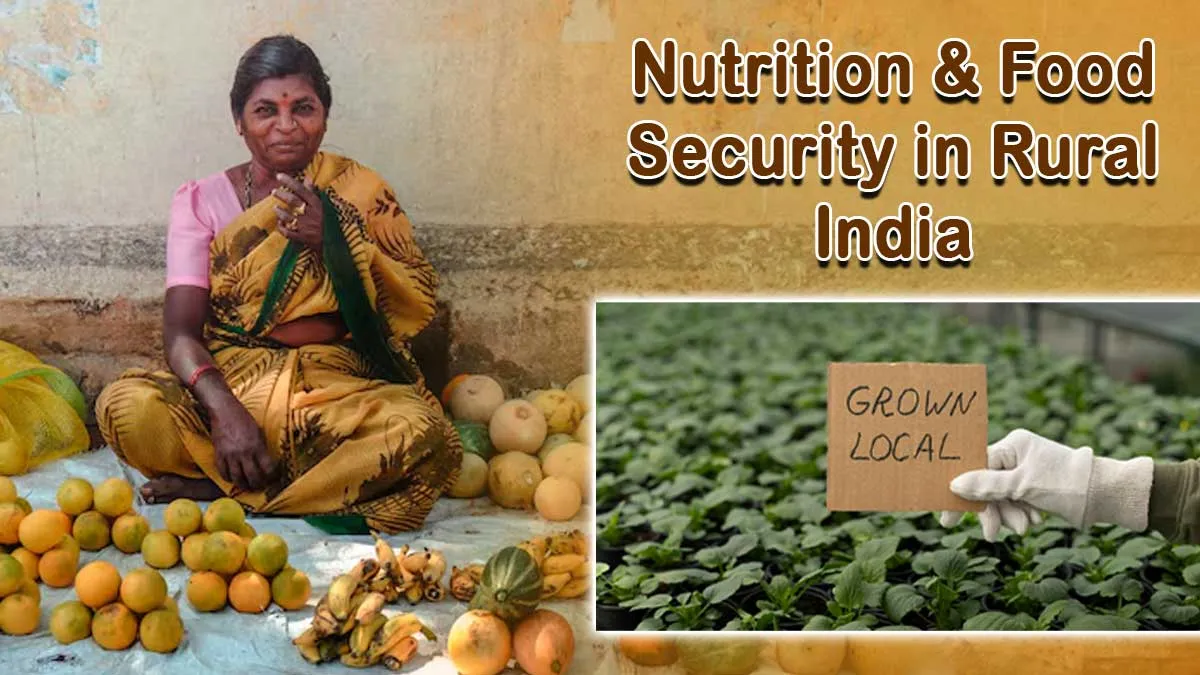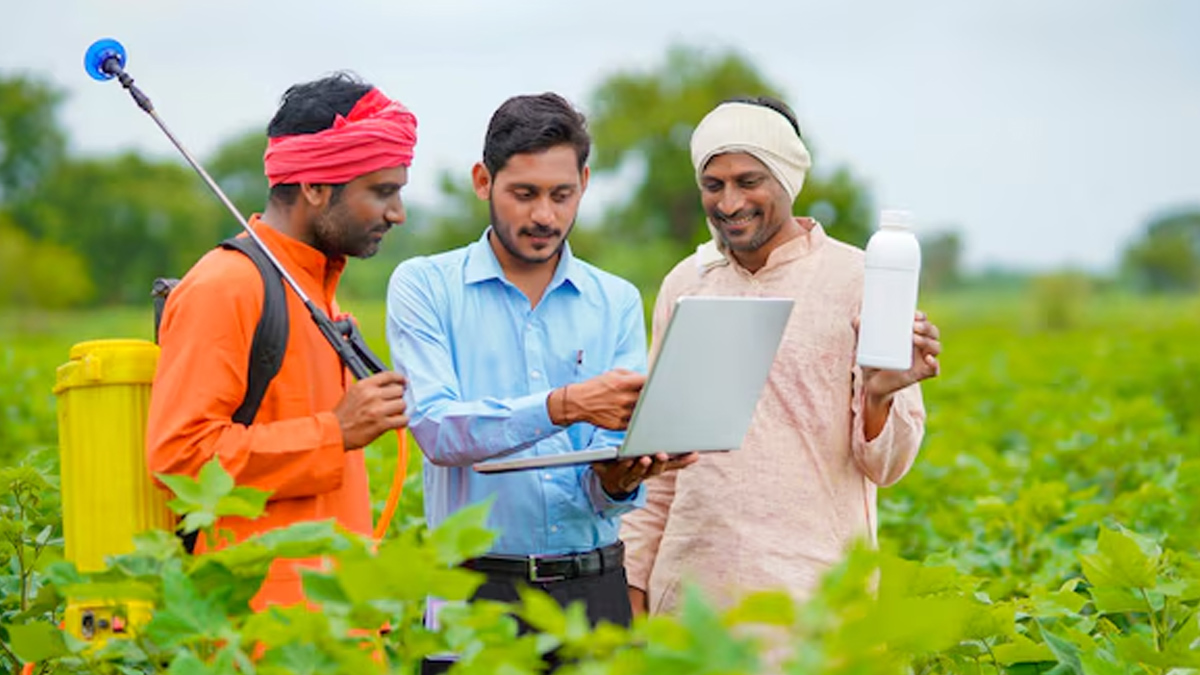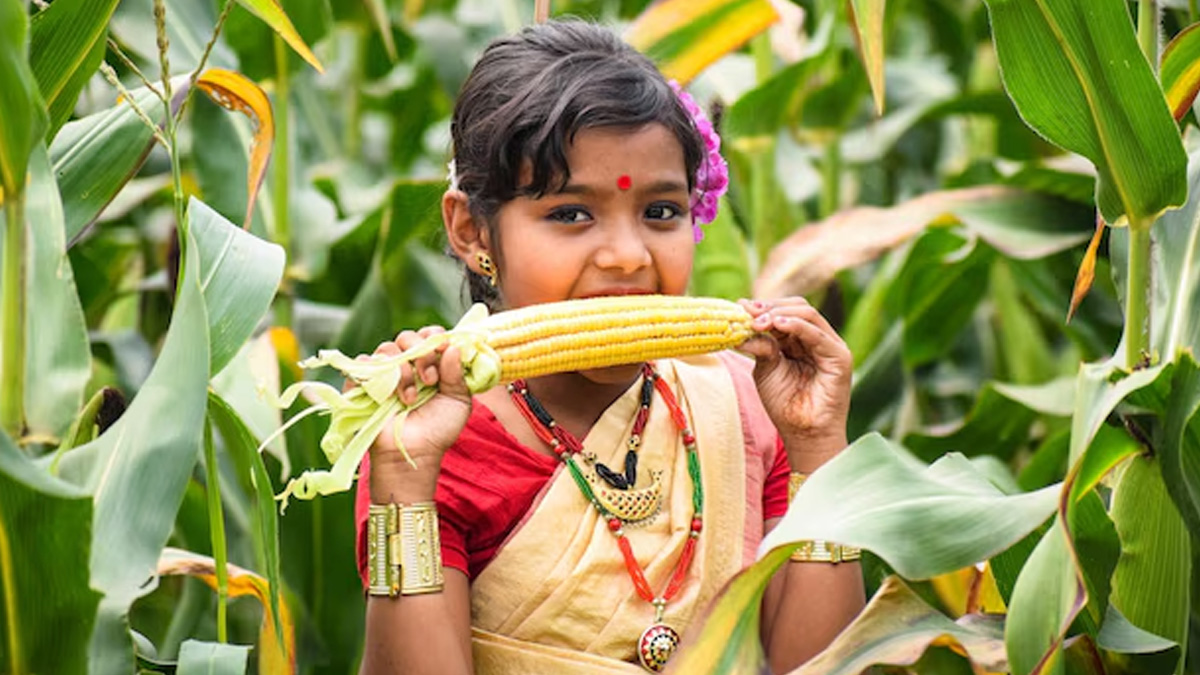
Ensuring proper nutrition and food security in rural India is essential for sustainable development and public health. Economic inequalities, climate changes, and supply chain disruptions have made hunger and malnutrition, as well as their associated consequences, much more difficult to solve. The problem is further exacerbated by the multi-dimensional and intergenerational challenges like low levels of education, poor awareness and health seeking behaviour, early marriage and child birth, misconstrued food practices, forgotten traditional indigenous food and recipes, push of the market on processed food, social customs which discriminate against women and perpetuates patriarchy, affecting health outcomes for the population at large.
Table of Content:-
As per World Food Programme (WFP), nearly 195 million people in India are undernourished. Around 43% of Indian children are chronically undernourished (as per UN). Whereas as per Food and Agriculture Organization (FAO) estimates, 74% of the Indian population cannot afford a healthy diet. In the 2024 Global Hunger Index, India ranked 105th out of 125 countries. Thus, India needs to take a more serious approach to tackle food security. Read on as Kuntalika Kumbhakar, Lead, Centre of Excellence, Nutrition- PRADAN sheds light on the topic.
How To Improve Nutrition and Food Security in Rural India
While the issues of nutrition and food security are all over the country, it is more concentrated in rural India. There is a need for improved agricultural practices, better earnings in rural livelihood, advancement in technology, and community solutions to tackle these issues in rural India.
Let us take a deeper look into five key steps to improve the health of rural India and ways to solve the issues related to nutrition and food security.
Also Read: Hearing Loss In Rural India: Expert Lists The Causes, Challenges, And The Way Forward
Implementing agrobiodiversity

Our current food system is at a dead end; basing food supply around a limited range of species has led to the rise of monoculture farming. This gradual undermining of the diversity of food systems by state policies and economic frameworks that emphasize market-centric production has led to replacement of diverse, regionally viable agricultural systems. On one hand it is increasing the vulnerability in production by increase in pest attacks, diseases, reducing soil health thus reducing yield and ecosystem resilience with long term impact on food production. Secondly, this reducing diversity in agriculture is leading to non- availability of balanced food groups for consumption from own production and making it available for others.
Thus, there is an ardent need to promote agricultural biodiversity and regenerative farming practices, which can bring in improved nutrition to all the sections of the society. It would be important to promote nutrition-sensitive agriculture approach which involves implementing ecologically sound and sustainable farming techniques to enhance produce quality and nutrient richness, prioritize crop diversity, cultivating nutrient-rich vegetables, fruits and legumes to boost dietary diversity and vital nutrient intake. It supports cultural and traditional knowledge systems, which involve use of indigenous farming practices suitable to the local conditions to grow a diverse range of crops using indigenous variety of seeds with higher nutritional value and climate resilience.
Expanding Access to Nutritious Food
Affordable and nutritious food should be made accessible to rural communities. It can be done through the strengthening of the Public Distribution System (PDS) by incorporating millets and pulses. India’s 2024 Global Hunger Index (GHI) score is 27.3, considered serious according to the GHI Severity of Hunger Scale. Similarly, incorporating more nutrition rich traditional food items, for e.g. millets, adequate pulses, micronutrient rich vegetables and local fruits in Mid-day Meals in schools and Anganwadi centres could be an important step to improve health of future generations. The Millet mission has brought back the importance of millets in the diet. Building further on that, instead of only providing rice in Mid-day meals and Anganwadi Centres, if millets are included in the menu regularly it will not only improve nutrition, it will also improve ecosystem resilience and soil health as production would be increased to cater to the requirement of MDM in schools, generating income for rural families.
Also Read: Here's Why You Should Choose Millet Flours Over Wheat And Maida

Strengthening/ Reinforce rural community-based institutions
The Food and Agriculture Organizations (FAO) highlights community-based gender-responsive projects that provide opportunities for women, who are essential members of rural economies, to contribute and benefit from food security initiatives equally. Rural entrepreneurship, especially agro-processing business, can serve as stable income-generating opportunities while enhancing the availability of food. Encouraging farmer producer organizations (FPOs) can also enable small farmers to achieve improved market access and negotiate a good price for their produce. In addition, increasing skill development programs specifically for rural youth in fields such as agribusiness and logistics may provide long-term employment opportunities.
Developing Robust Infrastructure
A planned infrastructure can immensely help solve the issues of food problems in rural India. Modern irrigation techniques like micro-irrigation, rain water harvesting in drought prone areas, water efficient technologies, increasing access to safe drinking water are crucial for maintaining agricultural output and enhancing public health. Programs such as farm-to-market roads, rural electrification, building decentralized storage units including cold storage units and online marketplaces for farmers can revolutionize local economies and avoid post-harvest losses. It is very important to encourage a seamless Public-private partnership to invest in building a robust agri infrastructure, warehousing solutions and cold chain infrastructure.
Also Read: Preventing Non-Communicable Diseases: The Vital Role of Nutrition Education for Today’s Youth
Strengthening Nutrition Education and Awareness
It is critical to engage in targeted awareness and knowledge building in rural India and to empower them with the right knowledge on health, nutrition, the determinants to good health and impact of undernourishment across age, including maternal and child health care. It has been observed through many pilot programs initiated by both government and not for profit organisations that interactive and well-designed Social Behaviour Change Communication (SBCC) programs can significantly improve dietary diversity and promote key practices such as breastfeeding, infant and young child feeding, and hygiene. These programs should be tailored for women and children, with active participation from self-help groups, supported by government and NGO-led initiatives to make the changes more sustainable. Specialized training must emphasize the vital role of nutrition in physical and mental well-being, transforming perceptions of food from mere sustenance to a foundation for a healthy life. Easy-to-use tools and technologies should be introduced to help communities assess nutritional gaps at regular intervals and make informed dietary choices whether through homegrown produce or local access to diverse food groups.
India is expected to achieve SDG 3 (Good Health and Well-being) by 2026-27 and SDG 2 (Zero Hunger) by 2027-28. Tackling the twin challenges of malnutrition and food insecurity in rural India is not merely a developmental goal- it is a moral imperative for a country striving toward equity, health, and sustainability. The crisis is no longer just about hunger; it is about the slow erosion of traditional knowledge, the weakening of local food systems, and the marginalization of communities already burdened by systemic inequalities. A transformative approach- anchored in agrobiodiversity, community empowerment, infrastructure development, and widespread education- must replace outdated models of production and consumption. Rural India holds within it the potential to feed not only itself but to become a beacon of sustainable, inclusive growth. This World Health Day, let us not stop at acknowledgement but move toward action that restores food as nourishment, culture, and right- because a nation cannot thrive when its villages go hungry.
Also watch this video
How we keep this article up to date:
We work with experts and keep a close eye on the latest in health and wellness. Whenever there is a new research or helpful information, we update our articles with accurate and useful advice.
Current Version